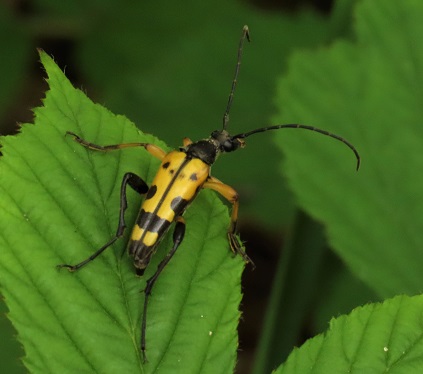Nature Notes June 2020
Date Published: 02-07-2020
The strong winds and rain during this period hindered active recording, restricting the number of opportunities to do so.
SIGHTINGS
Birds: Carrion Crows, Magpies, Jays, Buzzards, Black-headed Gulls, Common Gulls, Heron, Tawny Owls, Green/Great Spotted Woodpeckers, Sparrowhawk, Wood Pigeons, Stock Doves, Collared Doves, Nuthatches, Treecreepers, Wrens, Goldcrest, Blackcaps, Chiffchaffs, Willow Warbler, Blackbirds, Song Thrushes, Robins, Dunnocks, Siskins, Stonechats, Tree Pipits, Nightjar, Goldfinches, Greenfinches, Chaffinches, Bullfinches, Coal/Blue/ Great/ Long-tailed Tits.
Insects: Midges, Wasps, Hover Flies, Raft Spider, Ants, Garden Spider, Wasp Spider, Nursery-web Spider, Ichneumons, Grey Tailed Furrow Bee, Black and Yellow Longhorn Beetle.
Caterpillars/Butterflies/Moths: Holly Blues, Orange Tip, Comma, Peacock, Brimstone, Speckled Wood, Silver Studded Blue, Mullein Moth Caterpillar, Large Birch Sawfly Caterpillar, Grey Pine Carpet Moth.
Mammals: Grey Squirrel, Pipistrelle Bats, Hedgehogs, Fox.
Plants in Flower/Berry: Rhododendron, Common Cotton Grass, Yellow Flag Iris, White Arum Lily, Foxglove, Yellow Buttercup, Clover, Cut-leaved Geranium, Slender Yellow Wood sorrel, Wood Avens, Common Vetch, Ling Heather.
Pond Life: Pond Skaters, Whirlygig Beetles, Backswimmers.
Reptiles: Common Lizard.
Dragonflies/Damselflies: Broad Bodied Chaser, Small Red, Common Blue, Four Spot Chaser.
Large numbers of Silver Studded Blue Butterflies were seen on drier days throughout the month.
By the end of June, the majority of birds had completed their nesting, and a quiet period is approaching for moulting.
It was strongly noted that there were very few fledglings observed in each nest, with only Great Tits producing a reasonable number, around 3-4.
NATURE FACT
The Rutpela Maculata is commonly known as the Black and Yellow Longhorn Beetle. It grows up to 20 mm long and can be seen from May to September, usually in a woodland location. It can be identified by its tapered wing casings which feature four black bands nearer the thorax. The four front legs are yellow with black tips, the hind legs mostly black. This species is nearly always spotted feeding on nectar of flowers. The larvae feed on rotting tree stumps, especially Birch and Pine. They can live up to 4 years.
Recorder: C. Wilcox (with contributions from Martin Wood)
SITE MAINTENANCE
Cattle returned to the Reserve which are essential in controlling the increased number of saplings and proliferation of grasses. It is to be hoped the gradual easing of the corona virus lockdown will allow the monthly work parties to recommence shortly.





